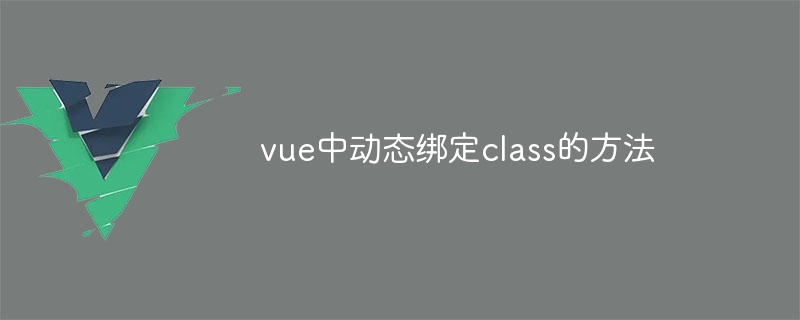Home >Web Front-end >Vue.js >How to dynamically bind classes in vue
How to dynamically bind classes in vue
- 下次还敢Original
- 2024-05-08 17:36:18705browse
Methods for dynamically binding Class in Vue include: 1) class array binding; 2) object binding; 3) function binding; 4) combining arrays and objects. These methods can dynamically show, hide, or switch classes based on data, and apply different classes based on conditions.

Methods to dynamically bind Class in Vue
In Vue, you can use the following method to dynamically bind class :
1. Class array binding
<code class="vue"><div :class="[class1, class2]"></div></code>
Among them, class1 and class2 are the class names to be bound .
2. Object binding
<code class="vue"><div :class="{ class1: true, class2: false }"></div></code>
In this method, the key in the object is the class name and the value is a Boolean value. If the value is true, the class will be applied.
3. Function binding
<code class="vue"><div :class="getClasses()"></div></code>
Here, getClasses() is a function that returns a class array or object.
4. Combining arrays and objects
<code class="vue"><div :class="[class1, { class2: true }]"></div></code>
This method allows the use of array-like binding and object binding at the same time.
Example
Suppose you have the following code:
<code class="vue"><template>
<div :class="classes"></div>
</template>
<script>
export default {
data() {
return {
classes: ['class1', 'class2']
}
}
}
</script></code>
In this example, the class names in the classes array will be dynamic Applied to div elements.
When to use dynamic binding
Dynamic binding class is useful in the following situations:
- Dynamicly display or hide the class based on data
- Switch classes in response to events or user interaction
- Apply different classes according to different conditions
The above is the detailed content of How to dynamically bind classes in vue. For more information, please follow other related articles on the PHP Chinese website!
Related articles
See more- How to understand the life cycle (hook function) in vue
- 12 excellent Vue backend management system template recommendations (free download)
- 12 Vue high-frequency principle interview questions (with analysis)
- What are the methods for passing values in vue components?
- How to pass value from vue subcomponent to parent component

